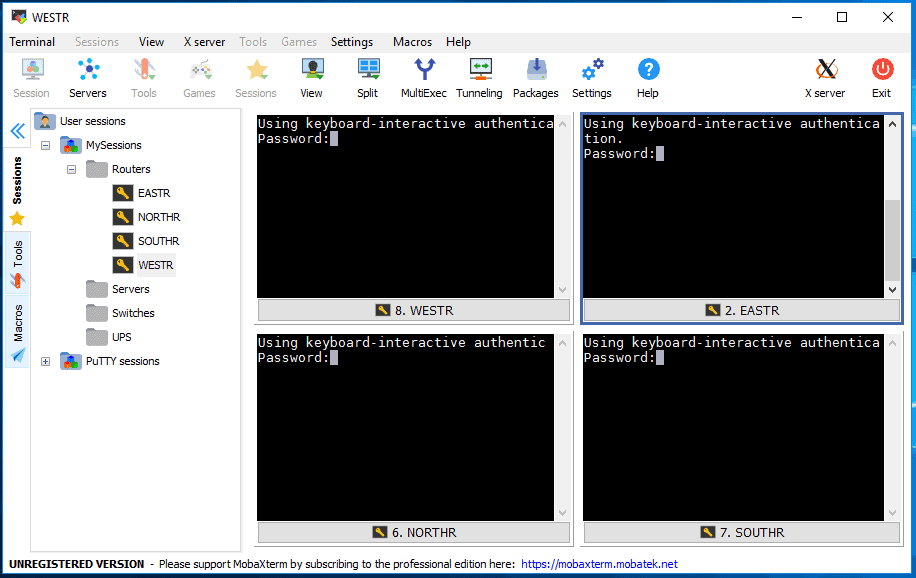
- #Visionapp remote desktop command line full
- #Visionapp remote desktop command line password
- #Visionapp remote desktop command line windows
View Session with user’s permission ( 3).
#Visionapp remote desktop command line full
Full Control without user’s permission ( 2).Full Control with user’s permission ( 1).No remote control allowed (corresponds to the value of the registry parameter Shadow = 0).This policy can be used to configure the following RD Shadow connection options: This policy corresponds to the DWORD Shadow parameter under the registry key HKLM\SOFTWARE\Policies\Microsoft\Windows NT\Terminal Services (the values of this parameter corresponding to the policy settings are specified in brackets).
#Visionapp remote desktop command line windows
The settings for remote connections to RDS user sessions are configured using the Group Policy parameter Set rules for remote control of Remote Desktop Services user sessions, which is located under the User and Computer sections of the GPO: Policies -> Administrative Templates -> Windows components -> Remote Desktop Services -> Remote Session Host -> Connections.
Event ID 20504: Shadow View Session Stopped.Ĭonfiguring RDS Shadow Rules on Windows Using GPO. Event ID 20503: Shadow View Session Started. Event ID 20508: Shadow View Permission Granted. If you need to audit RDS shadow connection events for user sessions, use the following filtered events from the Microsoft-Windows-TerminalServices-RemoteConnectionManager/Operational log: Verify the configuration of the policy settings. If you attempt to connect to a user’s session without prompting for confirmation, you receive an error message: Shadow Error: The Group Policy setting is configured to require the user’s consent. You cannot use the tsadmin.msc graphical snap-in from Windows Server 2008 R2 for shadow connections to RDP sessions on newer versions of Windows Server. Administrators can delegate RDS Shadowing permissions to any user account, even for non-admins (more on this below). In addition, it is not necessary to have administrator privileges on the RDS host on this the user’s RDP session is running. Shadow sessions can be used to connect to user sessions on computers and servers in both an Active Directory domain and a workgroup. #Visionapp remote desktop command line password
The user name and password are requested to connect to the remote computer.
/prompt – allows to connect with other credentials. /noConsentPrompt – the option allows the administrator to force the connection to any session without asking the user to confirm the connection. If this parameter is not set, the user’s session view mode is used 
The administrator can control the user’s mouse, input data from the keyboard.
/control – allows to interact with the user session (desktop). If not set, connections are made to local user sessions on the current host /v:servername – you can specify the hostname or IP address of the remote RDP/RDS host. /shadow:ID – connect to the user’s RDP session with the specified ID. On Windows Server 2016/Windows 10, the built-in RDP client ( mstsc.exe) has several special options that can be used to remotely shadow connect to an active RDP session of any user: Shadow Connection Options in the Windows RDP Client (mstsc.exe) How-to Allow Non-admin Users to Shadow RDS Sessions?. Configuring RDS Shadow Rules on Windows Using GPO. Using Remote Desktop Shadow from the Windows GUI. Shadow Connection Options in the Windows RDP Client (mstsc.exe). Note: In all the methods demonstrated in this blog any member of the local Remote Desktop Users group will be able to connect to the target computers. 
NOTE: Enabling RDP through GPO will configure the Windows Firewall with the appropriate ports to allow RDP connections.
Close the GPO editor and link the GPO to the appropriate Organizational Unit.  Select the Enable Radial button select OK. In the Settings pane double click Allow users to connect remotely by using Remote Desktop Services. Either edit an existing Group Policy Object (GPO) or create a new GPO.Ĭomputer Configuration\Administrative Templates\Windows Components\Remote Desktop Services\Remote Desktop Session Host\Connections. Launch the Group Policy Management Console (GPMC). If you have numerous Servers and/or Workstations that you need to enable RDP on and they are in the same Organization Unit structure in Active Directory you should enable RDP through Group Policy. Set- ItemProperty - Path "HKLM:\System\CurrentControlSet\Control\Terminal Server" - Name "fDenyTSConnections" – Value 1
Select the Enable Radial button select OK. In the Settings pane double click Allow users to connect remotely by using Remote Desktop Services. Either edit an existing Group Policy Object (GPO) or create a new GPO.Ĭomputer Configuration\Administrative Templates\Windows Components\Remote Desktop Services\Remote Desktop Session Host\Connections. Launch the Group Policy Management Console (GPMC). If you have numerous Servers and/or Workstations that you need to enable RDP on and they are in the same Organization Unit structure in Active Directory you should enable RDP through Group Policy. Set- ItemProperty - Path "HKLM:\System\CurrentControlSet\Control\Terminal Server" - Name "fDenyTSConnections" – Value 1







 0 kommentar(er)
0 kommentar(er)
